One at a time
Context
Having recently perused org-mode, I figured I’d give it a shot for a bit to see how I do.
Get a List of Recently Edited Files
On startup it’s handy to recall a recent file, as anything you’re editing you’re likely to have edited recently. There’s a config snippet for that:
(recentf-mode 1) (setq recentf-max-menu-items 25) (setq recentf-max-saved-items 25) (global-set-key "\C-x\ \C-r" 'recentf-open-files)
The emacs wiki has the above snippet and much more.
Emacs and Byobu – Shortcuts and Colours
I am a heavy user of byobu, having used screen for years for remote connections. Unfortunately, screen and emacs kinda step on each other’s keybindings:
Emacs uses
https://www.emacswiki.org/emacs/GnuScreen#h5o-1‘C-a’for‘beginning-of-line’. It is also the command key for GNU Screen, which causes a problem of “muscle memory impedance matching.”
I could probably live without ‘go to beginning of line’. But there’s another issue: that of colour. Turnspike notes:
It seems that byobu‘s defaults don’t play nice with emacs, eating important key sequences such as <C-h> and breaking color schemes. Adding the following line to ~/.byobu/.tmux.conf fixed the issue:
https://turnspike.com/2017/01/16/byobu-and-emacs-compatibility/
set -g default-terminal "screen-256color"
along with a link to the byobu bug report on Launchpad.
Now, I’m torn. In org-mode, both colour schemes look good! See:
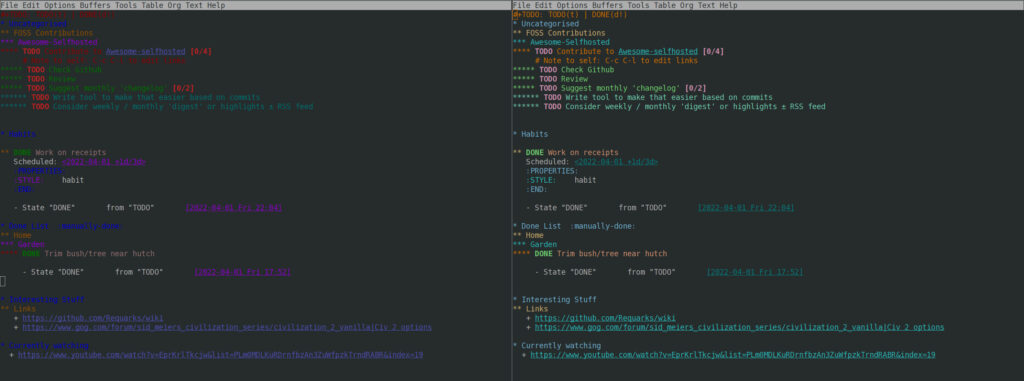
Or, to be fancy, we can use Jetpack’s image compare for a nifty drag and drop compare:
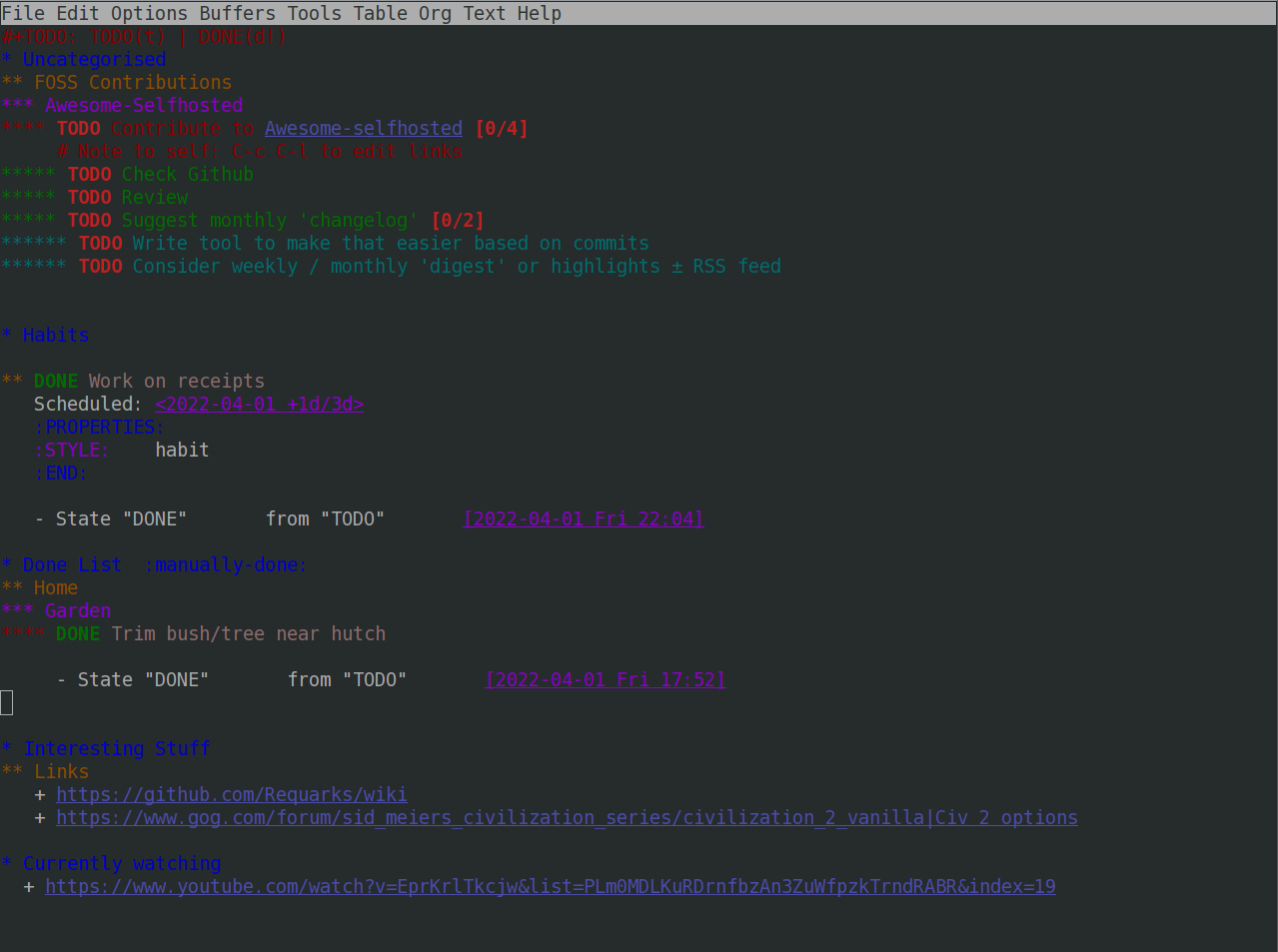
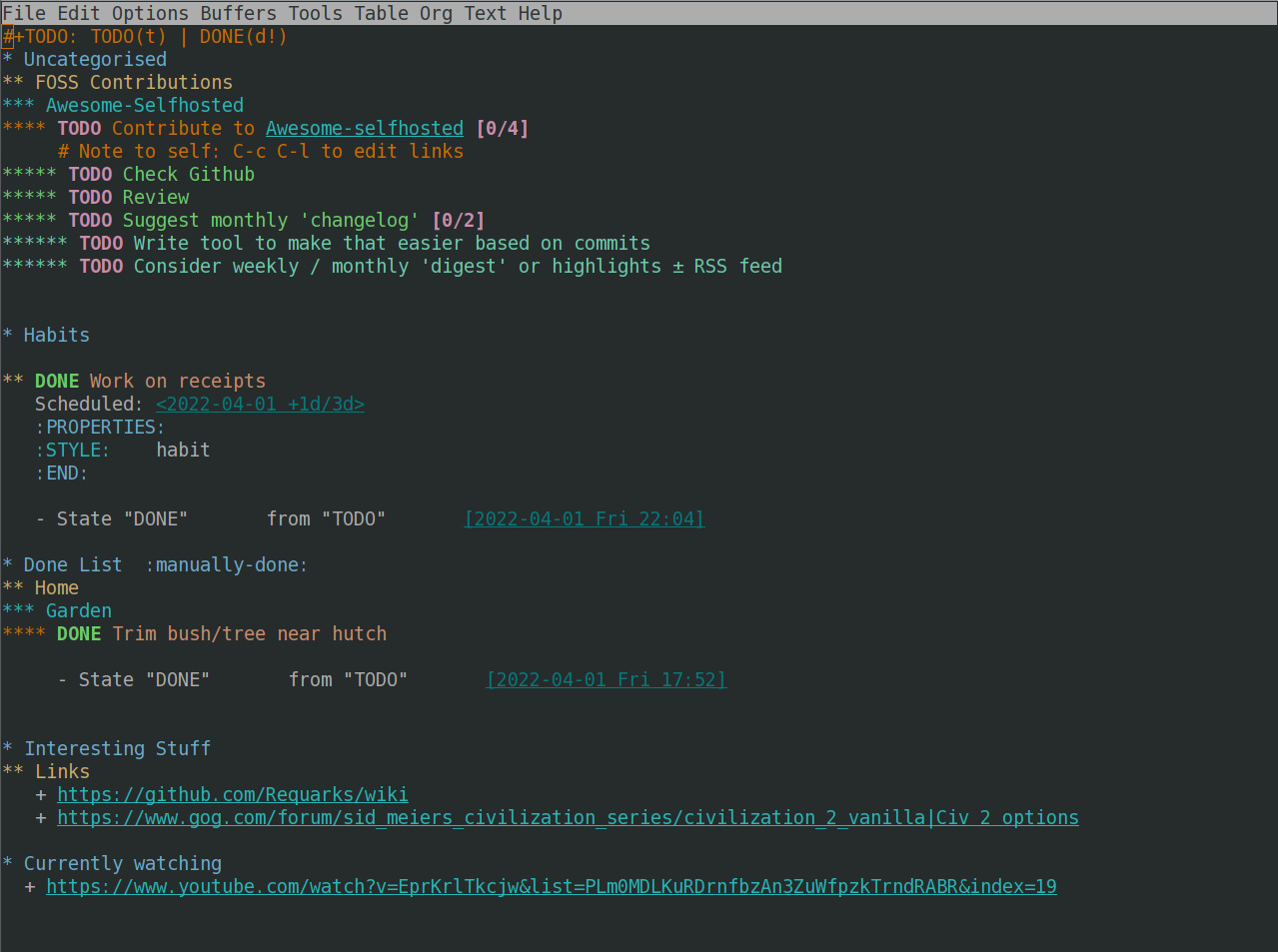
The non-screen based emacs has a better colour contrast, but at the cost of the top-level headline being quite hard to read against a dark background. Let’s add some more headlines and see how they look:

and the ‘image compare’ version:
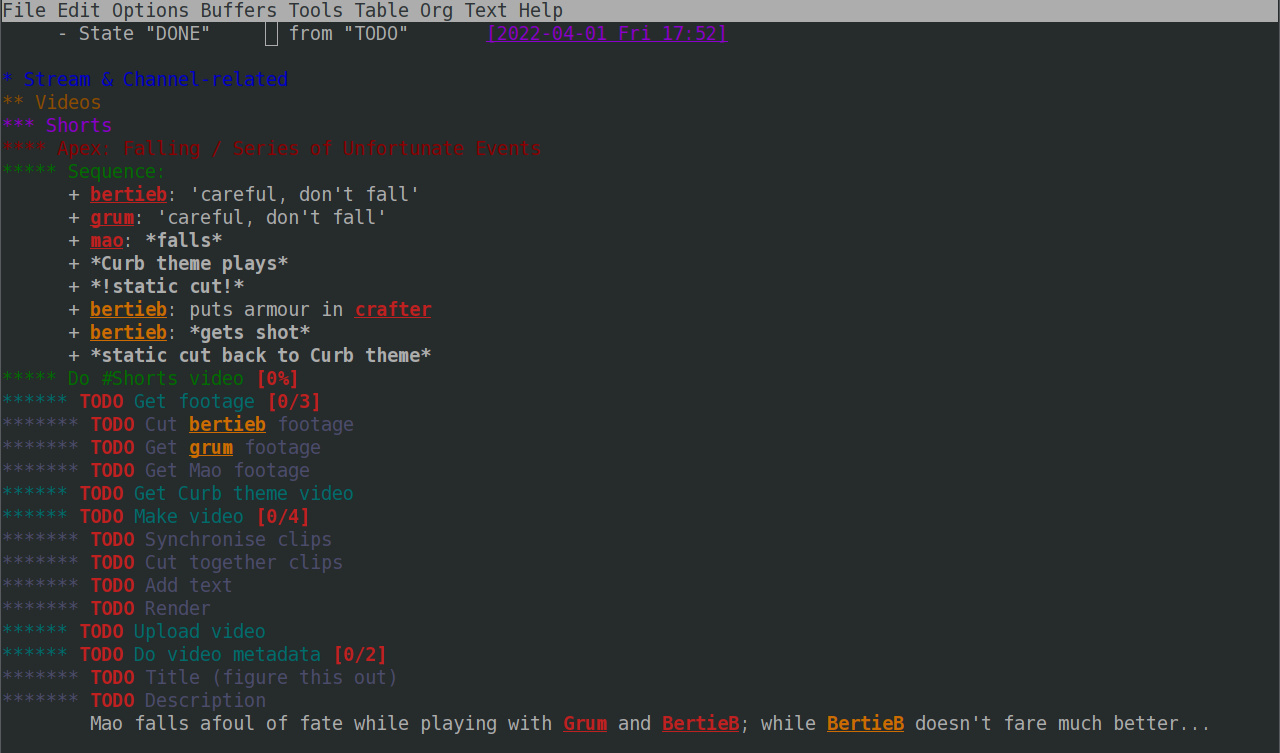
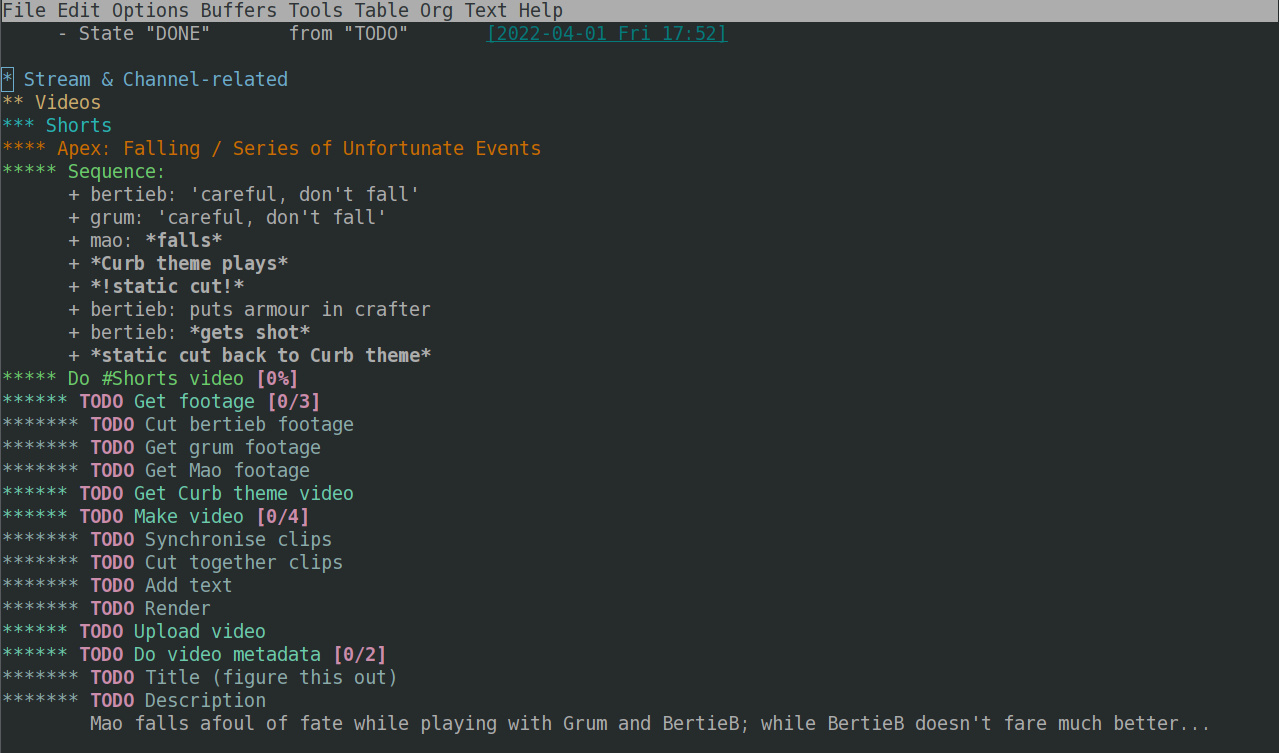
I think I’m leaning more towards the former!
Org Mode Bindings Don’t Work in Terminal
This is an annoying one- the org mode manual talks about helpful keybindings for working with various structures like headlines. Unfortunately, many of them, like M-LEFT (org-do-promote) / M-RIGHT (org-do-demote) just don’t seem to work.
A comprehensive search (ie googling “emacs org mode m-left org-do-promote not working”) brought me to this SO answer:
In addition to the keys in my question, S-TAB, S-Left, S-Right, S-Up and S-Down were not working over ssh and PuTTY. Using certain keys on a TTY connection (ssh, screen, PuTTY) is a known issue. Alternative keys are included in org-mode as detailed here. (ed: link dead)
The updated link appears to be ‘Using Org on a TTY‘, and an edit to the old QA has been submitted 🙂
Quickly Add Today’s Date
C-c . for (org-time-stamp). This prompts for a date with the calendar view, which I’m not sure how it works- the blue-on-black text is kinda hard to make out!

Fortunately there is a manual entry for that: the date/time prompt. So you can use relative times like “+2d” for “two days from now”, or even ‘+2tue’ for ‘the second Tuesday from now’ (neat!); and the calendar can be moved with S-<arrow>, > and <, and C / M-v.
Close / Kill a Buffer
C-x k – this probably came up in the tutorial, but I had forgotten. Useful when an org-agenda is hanging around!* There’s also M-x clean-buffer-list`, which kills buffers unmodified ‘for a long time’.
* Actually, agenda view can be closed with it’s default bindings, q or k. <_< >_>
SCHEDULED confusion
Finding out about scheduling from the otherwise decent Org mode manual reveals a paucity of explanation. The two main references are:
Fortunately there is another reference: an org tutorial on habits.
Oh. also: it’s all-caps like other properties- for some reason I thought it wasn’t necessary to capitalise it despite knowing about the ‘properties are capitalised’ rule.
Stage / commit a file
C-c v v invokes vc-next-action, which out of the box for me git add-ed and subsequently git commit-ed the file. Given I work exclusively with git, checking out Magit (wiki) seems like a good idea!
Run a shell command (in the terminal version)
M-! runs a shell command. Note that because of terminal eating / registering alt/meta differently (see above), I had to use <Esc>-! instead.
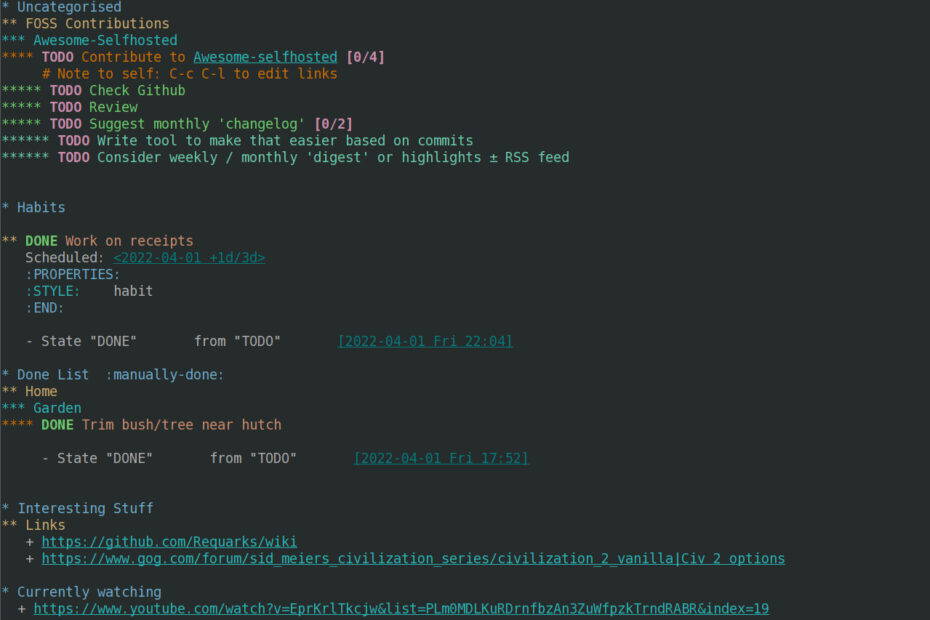
Pingback: Toddler Steps With Emacs – Rob's Blog